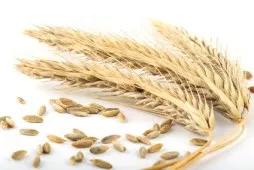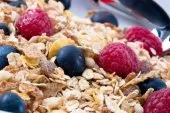A List of Whole Grains to Benefit Your Health!
Knowing a list of whole grains is your first step to benefiting from delicious and nutritious organic whole grain foods, which will help you to become a wellness savvy consumer while you are enhancing your own good health.

Examples of whole grains are found in normal everyday foods and in exotic additions to your food repertoire too!
Grains, which are the edible seeds of certain cultivated grasses, have been hailed throughout the centuries as the “staff of life.” It’s from these seeds that bread is made, a staple diet for many cultures and a symbol of life. The complex carbohydrates, vitamins and trace minerals contained in these nutritious seeds make grains an extremely valuable food source.
Here is a Partial List of Whole Grains:
- Whole kernel corn
- Rolled oats/oatmeal
- Popcorn
- Hulled (non-pearled) barley
- Brown rice
- Wild rice
- Cracked wheat
- Buckwheat
- Whole rye
- Sprouted grains
- Quinoa
What Are Whole Grains?
Whole grains are simply that— whole. A single seed from any of the above examples of whole grains is composed of three distinct parts: Bran, germ and endosperm. Whole grain products use their entire seed (Bran, germ, endosperm) instead of just the endosperm.Refined grains use only the largest part of the seed— the endosperm. Removing and discarding the outer covering— the bran and the tiny, but nutritiously important germ— effectively strips the resulting product of many valuable nutrients.
Whole grains are valuable since there are important trace nutrients in the bran and germ that are missing in the endosperm. Whole grains are high in important nutrients and the bran and germ are high in fiber. The consumptions of whole grains rather than refined grains have been linked with the reduction of coronary heart disease, according to an article in the Journal of the American College of Nutrition.
When choosing products that use whole grains, read the list of ingredients. If the word “whole” precedes the word “grain,” it is a whole grain product. If the word “refined” appears, it is not a whole grain product; it is refined— stripped of nutrition and fiber. The phrase “refined whole wheat,” is a clever marketing misnomer designed to get your money and give you a nutrient-devoid product.

Organic Whole Grains
Another nutritional buzzword associated with whole grains is the word “organic.” Organic whole grains are the cereal grains grown without the aid of chemical pesticides or fertilizer. Organic whole grains are particularly important since the entire seed is eaten. Any chemical added to the grain field is absorbed by the fragile seeds and cannot be separated. Choose organic whole grains to get all of the benefits of the grains without any of the added chemicals.Go
From List of Whole Grains to Top Foods
Go
From List of Whole Grains to HOME of WellnessWith Natural Health
Supplements




